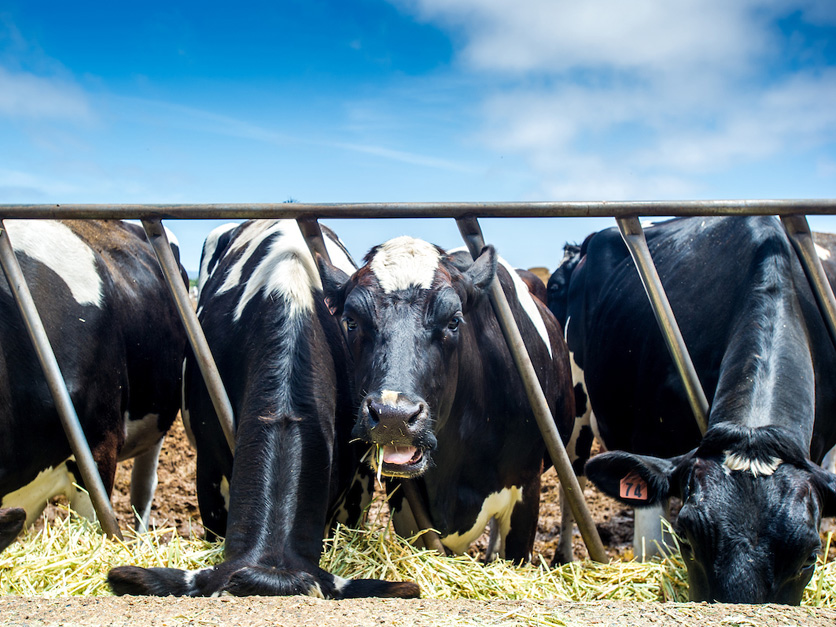USDA has selected 21 potential projects costing $88 million that could help relieve farmers' near term needs for fertilizer, Agriculture Secretary Tom Vilsack said Monday.
The department will take comments on the projects while carrying out an environmental review of the proposals, Vilsack told members of the American Farm Bureau Federation at its annual meeting in San Juan, Puerto Rico. The proposals outlined by USDA include a variety of ways of using food waste, manure and other feedstocks.
"We think that there's an opportunity here to have an impact, to send a strong message about the desire on the part of the Department of Agriculture to make sure that we are self-reliant when it comes to basic inputs," Vilsack said.
He said the initiative prioritized independently owned, U.S.-based entities that "focus on next gen and innovative approaches, that would be sustainable, and most importantly of all would be farmer focused."
The 21 potential projects would be located in 14 states Alabama, Arizona, Colorado, Florida, Iowa, Louisiana, Massachusetts, Minnesota, Missouri, Montana, Ohio, Oregon, Texas, Washington, and Wisconsin.
“This program is one of many ways the Biden-Harris Administration invests in the agricultural supply chain right here at home,’ USDA said in a news release. “Investing in projects to increase fertilizer production will bring production and jobs back to the United States, promote competition and support American goods and services.”
The $88 million in grants would be part of the first round of the Fertilizer Production Expansion Program. The public comment period “is occurring at the beginning of the environmental review process to supplement the standard process,” which will include review under the National Environmental Policy Act and the National Historic Preservation Act, ae well as review by USDA’s Tribal Historic Preservation Office, USDA said.
“This public comment period is not a substitute for the usual environmental review process but an extension of it,” USDA said.
Vilsack told reporters a short comment period will allow the public to identify potential environmental or historic preservation concerns while USDA concurrently conducts NEPA, NHPA and other reviews.
He said he did not know what the combined capacity of the projects would be.
"The point of this is that it's a concerted effort on our part to begin – and I emphasize the word 'begin' – the process of trying to figure out how we can be more self-reliant when it comes to inputs than we have been in the past," he said.
With three projects apiece, Wisconsin and Missouri top the list of states. Black’s Valley Ag Supply in Durand, Wis., wants to build a new dry fertilizer storage and blending facility with solar panels. “The project would dramatically reduce the time it takes for farmers to receive fertilizer as well as improve the efficiency of transportation by being able to load larger trucks (semi) which would reduce emissions and road wear and tear,” according to the USDA summary.
Dairy Dreams in Cosco, Wis., “will install a state-of-the-art Nutrient Concentration System and a pelletizing system which will process manure inputs into organic liquid and pellet fertilizers,” according to its summary. “The NCS comprises an innovative equipment suite which includes a screening system to remove solids, a mechanically powered membrane system, and a forced draft aerator tank. The solids product resulting from NCS processing will be stored and subsequently converted into phosphorus-rich pellets by the pelletizing system.”
The Delong Co. in Elkorn wants to remove an existing feed mill and three other buildings and build in their place “a new dry fertilizer warehouse, liquid fertilizer dike with tanks, and liquid fertilizer loadout building.”
The Missouri projects include Elm Dirt’s proposal to rent a larger warehouse and buy equipment to make more liquid fertilizer and Ostara St. Louis Ltd.’s proposal to complete construction of a fertilizer production plant in an existing decommissioned fertilizer manufacturing building that was used by Koch Agronomic Services to make coated urea. Palindromes Inc. of Unionville, Mo., would use funding to buy and build two new fertilizer processing systems and two new anaerobic digestion systems.
Other projects involve production of slow-release nitrogen fertilizer in Iowa and expansion of an operation in Colorado that makes locally predicted compost in the Four Corners region of Colorado, Utah, New Mexico and Arizona.
Another project in Ohio would use the funding to buy “equipment for aerobic digestion technology to create natural fertilizer digestate from local food waste,” USDA said.
Philip Brasher contributed to this report.
For more news, go to www.Agri-Pulse.com.


